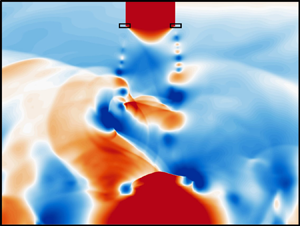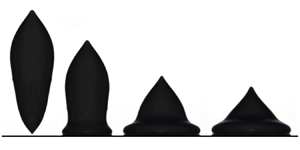Refine listing
Actions for selected content:
1418748 results in Open Access
Multi-linear forms, graphs, and
 $L^p$-improving measures in
$L^p$-improving measures in  ${\Bbb F}_q^d$
${\Bbb F}_q^d$
- Part of
-
- Journal:
- Canadian Journal of Mathematics / Volume 77 / Issue 1 / February 2025
- Published online by Cambridge University Press:
- 27 December 2023, pp. 208-251
- Print publication:
- February 2025
-
- Article
- Export citation
M. Berg and P. Hudson, Slavery, Capitalism and the Industrial Revolution (London: Polity Press, 2023). Pages ix + 288 + figures 8 + tables 13. £25 hardback
-
- Journal:
- Continuity and Change / Volume 39 / Issue 1 / May 2024
- Published online by Cambridge University Press:
- 27 December 2023, pp. 127-128
- Print publication:
- May 2024
-
- Article
- Export citation
Meritocracy as Authoritarian Co-Optation: Political Selection and Upward Mobility in China
-
- Journal:
- American Political Science Review / Volume 118 / Issue 4 / November 2024
- Published online by Cambridge University Press:
- 27 December 2023, pp. 1856-1872
- Print publication:
- November 2024
-
- Article
-
- You have access
- Open access
- HTML
- Export citation
Eukaryotic swimming cells are shaped by hydrodynamic constraints
-
- Journal:
- Journal of Fluid Mechanics / Volume 978 / 10 January 2024
- Published online by Cambridge University Press:
- 27 December 2023, R1
-
- Article
- Export citation
Faunal and paleoenvironmental changes at a Cambrian (Jiangshanian; Steptoean–Sunwaptan boundary interval) trilobite extinction event, in contrasting deep- and shallow-subtidal settings, Nevada and Oklahoma
-
- Journal:
- Journal of Paleontology / Volume 98 / Issue 4 / July 2024
- Published online by Cambridge University Press:
- 27 December 2023, pp. 584-611
-
- Article
-
- You have access
- Open access
- HTML
- Export citation
On the root of unity ambiguity in a formula for the Brumer–Stark units
- Part of
-
- Journal:
- Canadian Mathematical Bulletin / Volume 67 / Issue 3 / September 2024
- Published online by Cambridge University Press:
- 27 December 2023, pp. 611-623
- Print publication:
- September 2024
-
- Article
- Export citation
Preventive effects of caffeine on nicotine plus high-fat diet-induced hepatic steatosis and gain weight: a possible explanation for why obese smokers with high coffee consumption tend to be leaner
-
- Journal:
- British Journal of Nutrition / Volume 131 / Issue 8 / 28 April 2024
- Published online by Cambridge University Press:
- 27 December 2023, pp. 1342-1351
- Print publication:
- 28 April 2024
-
- Article
-
- You have access
- HTML
- Export citation
A data-driven approach to guide supersonic impinging jet control
-
- Journal:
- Journal of Fluid Mechanics / Volume 978 / 10 January 2024
- Published online by Cambridge University Press:
- 27 December 2023, R2
-
- Article
- Export citation
On local isotropy and scale dependence of pair dispersion in turbulent canopy flows
-
- Journal:
- Journal of Fluid Mechanics / Volume 978 / 10 January 2024
- Published online by Cambridge University Press:
- 27 December 2023, A3
-
- Article
-
- You have access
- Open access
- HTML
- Export citation
Loess transportation surfaces in west-central Wisconsin, USA
-
- Journal:
- Quaternary Research / Volume 120 / July 2024
- Published online by Cambridge University Press:
- 27 December 2023, pp. 36-52
-
- Article
- Export citation
The role of viscoplastic drop shape in impact
-
- Journal:
- Journal of Fluid Mechanics / Volume 978 / 10 January 2024
- Published online by Cambridge University Press:
- 27 December 2023, A1
-
- Article
- Export citation
SOLVABLE GROUPS WHOSE NONNORMAL SUBGROUPS HAVE FEW ORDERS
- Part of
-
- Journal:
- Bulletin of the Australian Mathematical Society / Volume 110 / Issue 1 / August 2024
- Published online by Cambridge University Press:
- 27 December 2023, pp. 121-128
- Print publication:
- August 2024
-
- Article
- Export citation
Scientizing the ‘environment’: Solly Zuckerman and the idea of the School of Environmental Sciences
-
- Journal:
- The British Journal for the History of Science / Volume 57 / Issue 1 / March 2024
- Published online by Cambridge University Press:
- 27 December 2023, pp. 99-112
- Print publication:
- March 2024
-
- Article
-
- You have access
- Open access
- HTML
- Export citation
Imbibition and collapse between swelling fibres
-
- Journal:
- Journal of Fluid Mechanics / Volume 978 / 10 January 2024
- Published online by Cambridge University Press:
- 27 December 2023, A2
-
- Article
- Export citation
The rolling snowball: lone English-origin lexical items in Guernésiais
-
- Journal:
- Journal of French Language Studies / Volume 34 / Issue 2 / July 2024
- Published online by Cambridge University Press:
- 27 December 2023, pp. 155-179
-
- Article
-
- You have access
- Open access
- HTML
- Export citation
Meridional rank and bridge number of knotted 2-spheres
-
- Journal:
- Canadian Journal of Mathematics / Volume 77 / Issue 1 / February 2025
- Published online by Cambridge University Press:
- 27 December 2023, pp. 282-299
- Print publication:
- February 2025
-
- Article
- Export citation
LATE ROMAN FIELD ARMIES - (A.) Kaldellis, (M.) Kruse The Field Armies of the East Roman Empire, 361–630. Pp. xxii + 205, maps. Cambridge: Cambridge University Press, 2023. Cased, £85, US$110. ISBN: 978-1-009-29694-6.
-
- Journal:
- The Classical Review / Volume 74 / Issue 1 / April 2024
- Published online by Cambridge University Press:
- 27 December 2023, pp. 212-214
- Print publication:
- April 2024
-
- Article
- Export citation
Currency Carry, Momentum, and Global Interest Rate Volatility
-
- Journal:
- Journal of Financial and Quantitative Analysis / Volume 60 / Issue 2 / March 2025
- Published online by Cambridge University Press:
- 27 December 2023, pp. 839-873
- Print publication:
- March 2025
-
- Article
- Export citation
Vapaki: Ancestral O'Odham Platform Mounds of the Sonoran Desert. Glen E. Rice, Arleyn W. Simon, and Chris Loendorf, editors. 2023. University of Utah Press, Salt Lake City. xx + 305 pp. $80.00 (hardcover), ISBN 978-1-64769-117-2. $64.00 (e-book), ISBN 978-1-64769-119-6.
-
- Journal:
- American Antiquity / Volume 89 / Issue 2 / April 2024
- Published online by Cambridge University Press:
- 27 December 2023, pp. 328-330
- Print publication:
- April 2024
-
- Article
- Export citation

































